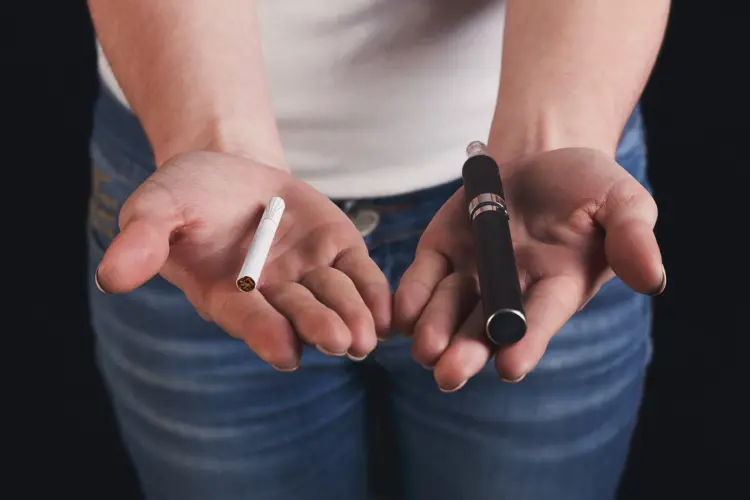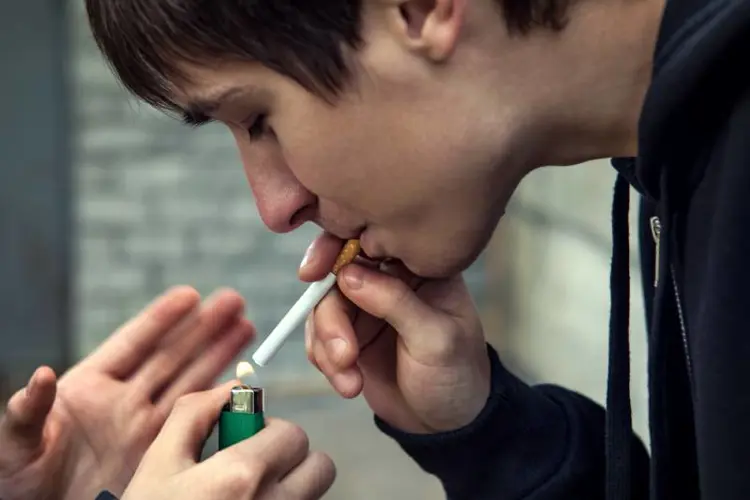The Truth Initiative has just published a new study that purports to back up FDA Commissioner Scott Gottlieb’s claim that teenage vaping — and especially teen use of JUUL — has become an epidemic. But their numbers don’t match their claims.
The figure Truth trumpets on its website is that teens aged 15-17 are 16 times more likely to have ever used a JUUL than adults aged 25-34. They also claim that “teens are not just experimenting with the device, but using it regularly,” citing figures for use on 10 or more of the last 30 days.
But the CDC defines frequent use as 20 of the last 30 days, not 10. In fact, Truth’s paper doesn’t even show the prevalence of use on 20 or more of the last 30 days, or anything beyond 10 or more. Why? Maybe because the number of 15- to 17-year-olds that vape frequently remains very small. Maybe because habitual use is only common among teens who already smoke. Even using the liberal version of “regular use” that Truth adopts in the study, the results don’t show the epidemic Truth claims they do.
Among 15- to 17-year-olds, just 1.5 percent used the JUUL on 10 or more of the last 30 days. That sounds suspiciously similar to recent National Youth Tobacco Survey results. In 2017, 1.6 percent vaped on 20 or more of the last 30 days, and just 1.1 percent vaped daily. In 2015 — the year with the highest past-30-day youth e-cigarette use — 1.7 percent vaped on 20 says or more.
Is it possible that a similar number of kids regularly vape now as then, but are using different devices? Quite possible. But Truth also deliberately confuses the results by possibly splitting JUUL use from other “ENDS” use. They list them separately, and never explain if the JUUL users are a subset of the larger ENDS group, or listed in addition to the non-JUUL vapers.
They say 11 percent of 15- to 17-year-olds are ENDS users, and leave it to the reader to guess whether to add or subtract the 6 percent of the group that uses JUUL. How likely is it that the number of high school vapers jumped to 17 percent and Truth didn’t point it out? Not very.
It’s as though the study were written to confuse anyone who actually reads it. Of course, most people don’t read it — including reporters. Most early news stories pretty much stuck close to the press release. Then, as you might expect, the statement on the Truth website takes the already confusing study and twists it into even more complicated knots.
When Truth released its first JUUL study in April, they used rhetorical tricks to exaggerate their findings, and that hasn’t changed with the new study. I don’t claim to be a scientist or an expert on scientific communication to lay readers, but it seems rather deceptive to express a number as a percentage of a larger percentage, rather than just describing it as a percentage of the whole sample, or — god forbid — stating the actual number itself. Example:
“Among 15- to 17-year-olds who used JUUL in the past 30 days, 56 percent used the e-cigarette on three or more days and almost half of that group used it on 10 or more days in the past month,” says the press release.
If you read that quickly, you might come away thinking that half of all kids used a JUUL on 10 or more days. But they didn’t. Let’s rewrite that to tell the simple truth: “Just 1.5 percent of 15- to 17-year-olds vaped a JUUL on 10 or more days of the month. We won’t tell you how many vaped on 20 or more days, or every day, but it was an even smaller percentage.” Those are actual numbers from the survey.
Or, even better yet — and also using Truth's actual numbers: “We surveyed 13,357 people between ages 15 and 34. Of the 15- to 17-year-olds, 34 of them used a JUUL on 10 or more days of the last 30...yadda yadda yadda...it’s an epidemic!”
What no one has explained is the bizarre survey question the Truth researchers used:
“Ever JUUL use was measured with the item: ‘Have you ever smoked a JUUL vape?’, with responses 1=yes, 0=no. Current JUUL use was defined as those who had used the device in the past 30 days, and was measured with the item: ‘During the past 30 days, on how many days did you smoke a JUUL vape?’ Participants were prompted to enter the number of days between 0 and 30.”
Has anyone ever “smoked a JUUL vape”? What does that even mean? Truth Initiative knows from its own research that teens use verbs like “vape” and (rarely) “juul” for the practice of using a JUUL. Why on earth did Truth choose this survey to challenge the accepted language teens use for vaping? Are they trying to provide a route to later question the validity of their own study? Or could they just not bear to use the same words that real people use to describe vaping a JUUL?
Speaking of smoking, according to Truth more 15- to 17-year-olds used combustible tobacco in the last 30 days than used a JUUL. That didn’t make the press release. Have you noticed that Truth and Tobacco-Free Kids pay virtually no attention to smoking anymore? Guess which powerful tobacco control groups would become completely irrelevant if vaping turned cigarettes into last century’s problem.
The study, published in the journal Tobacco Control, is really only a frame for the larger anti-vaping pressure campaign on the FDA. It was coordinated to release simultaneously with a letter from Senate Democrats to Scott Gottlieb demanding action on vape flavors — just like the last time. And the news outlets favored by tobacco control orgs had the story, told the “right” way, ready to go the moment the Truth study was released.
The study’s conclusion is chock full of policy recommendations that — surprise! — are exactly the actions Gottlieb has already said he’s considering — with some extras thrown in. They call on the FDA to:
- Immediately institute premarket review (PMTA’s) for all vaping products
- Prohibit internet sales of all tobacco products, including vapes
- Ban all flavored products (unless proven to be marketed primarily for adults to “switch completely”)
Instituting any one of those actions would effectively cripple the independent vaping industry — and all of them at once would kill it. Scott Gottlieb and Mitch Zeller are going to do something in a couple of weeks. And they just might decide to throw millions of smokers under the bus because of 34 kids who hit a friend’s JUUL on 10 of the last 30 days.
The Truth website includes a video (shown above) that raises lots of disturbing questions. It shows clips of what Truth says are teenagers on YouTube juuling. (At least one of them, Zophie Vapes, is over 30, and the video her clip is pulled from is about how she doesn’t use the JUUL.) Why would Truth Initiative include the faces and voices of people it claims are teenagers in its public flogging of an e-cigarette company it accuses of victimizing kids? And why dig up clips from multiple videos that have already been removed from YouTube?
Did the YouTubers or their parents give consent? Were they notified that their images would be used in a political video from an activist anti-vaping organization? Is YouTube cooperating with Truth’s self-serving attacks on vaping and providing them with content? Who preserved the deleted videos and allowed Truth to edit them into a propaganda document?
Anyone is fair game in Truth’s war to eliminate safer sources of nicotine. Teenagers who make a video for YouTube get the same treatment as the multi-billion dollar company that stands in the way of Truth’s mission to protect its status, which depends in many ways on preserving the cigarette market. And the 36 million American smokers who could benefit from vaping are ignored and abandoned, as usual.
Note: Truth Initiative's video (shown above) was later altered to remove Zophie Vapes (and perhaps other video clips). The version linked above is the edited version.
The Freemax REXA PRO and REXA SMART are highly advanced pod vapes, offering seemingly endless features, beautiful touchscreens, and new DUOMAX pods.
The OXVA XLIM Pro 2 DNA is powered by a custom-made Evolv DNA chipset, offering a Replay function and dry hit protection. Read our review to find out more.
The SKE Bar is a 2 mL replaceable pod vape with a 500 mAh battery, a 1.2-ohm mesh coil, and 35 flavors to choose from in 2% nicotine.
Because of declining cigarette sales, state governments in the U.S. and countries around the world are looking to vapor products as a new source of tax revenue.
The legal age to buy e-cigarettes and other vaping products varies around the world. The United States recently changed the legal minimum sales age to 21.
A list of vaping product flavor bans and online sales bans in the United States, and sales and possession bans in other countries.

















